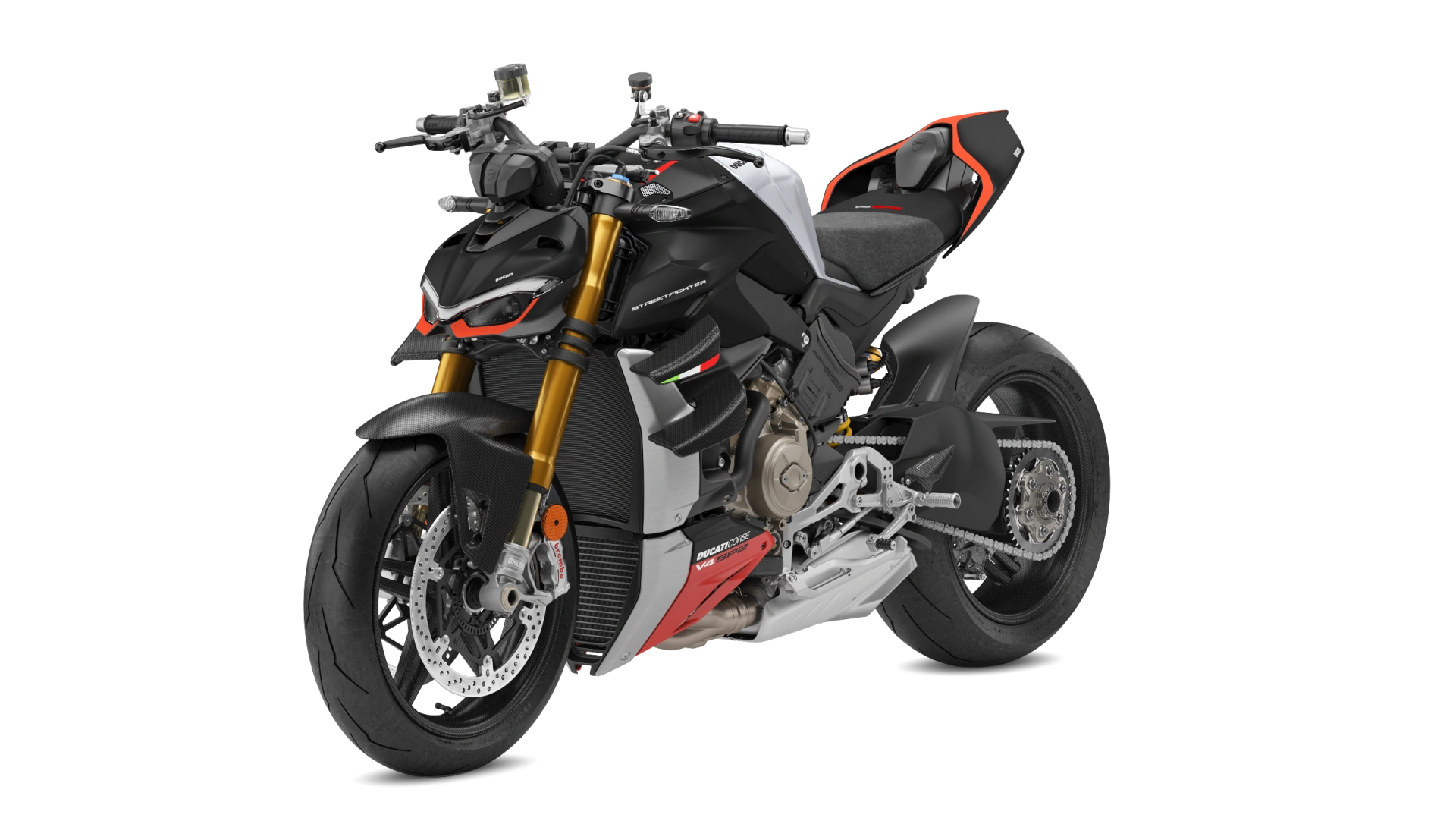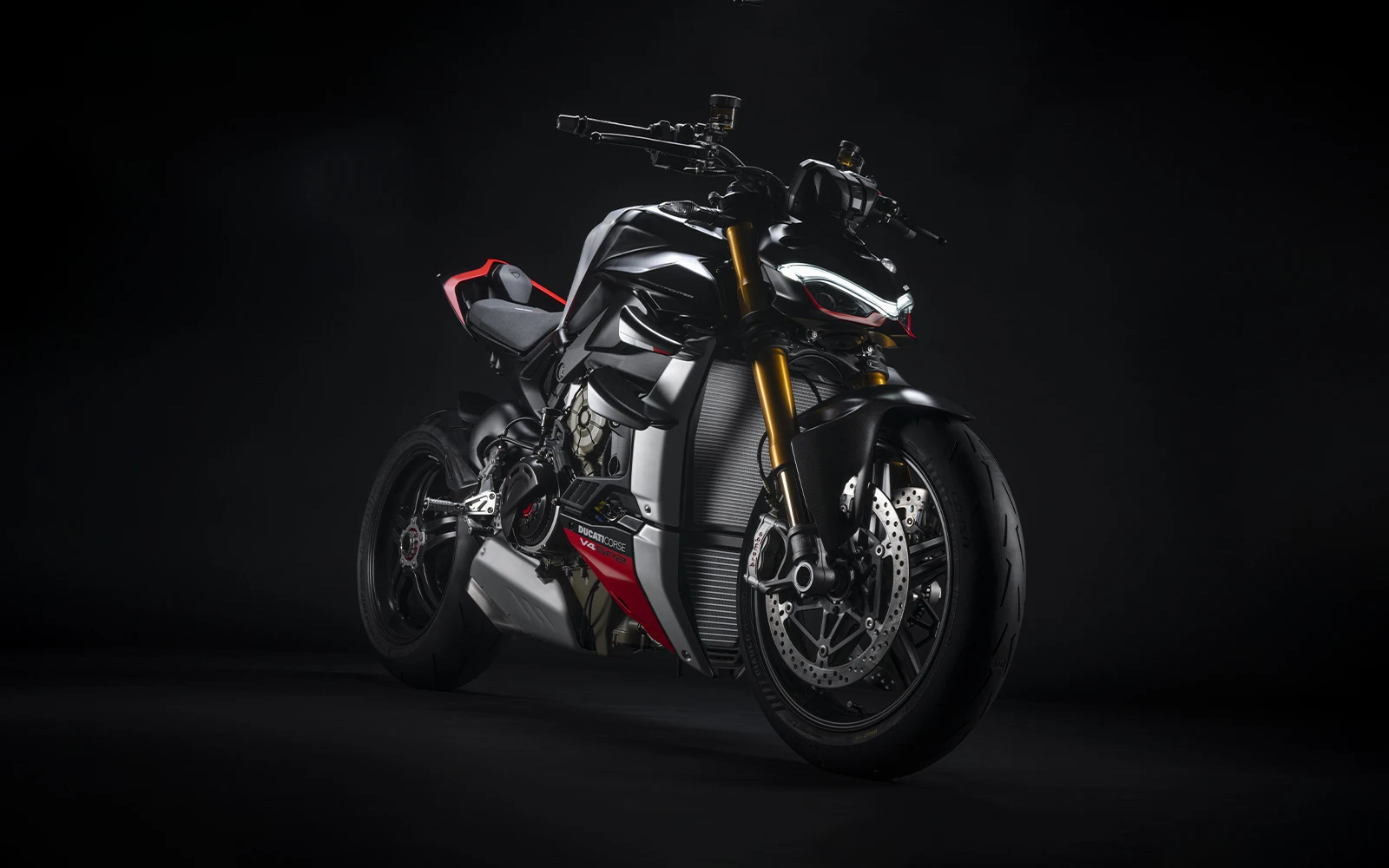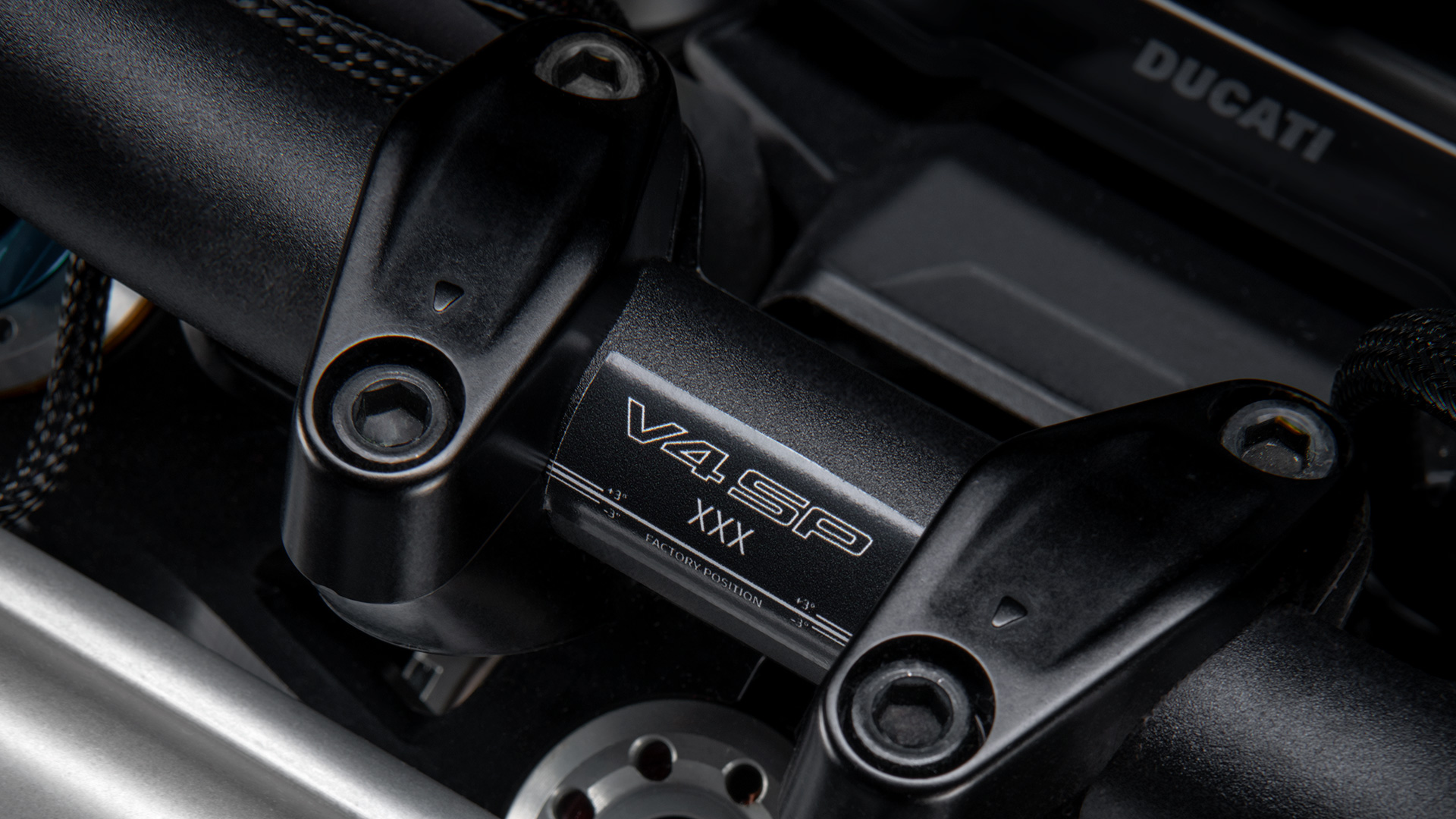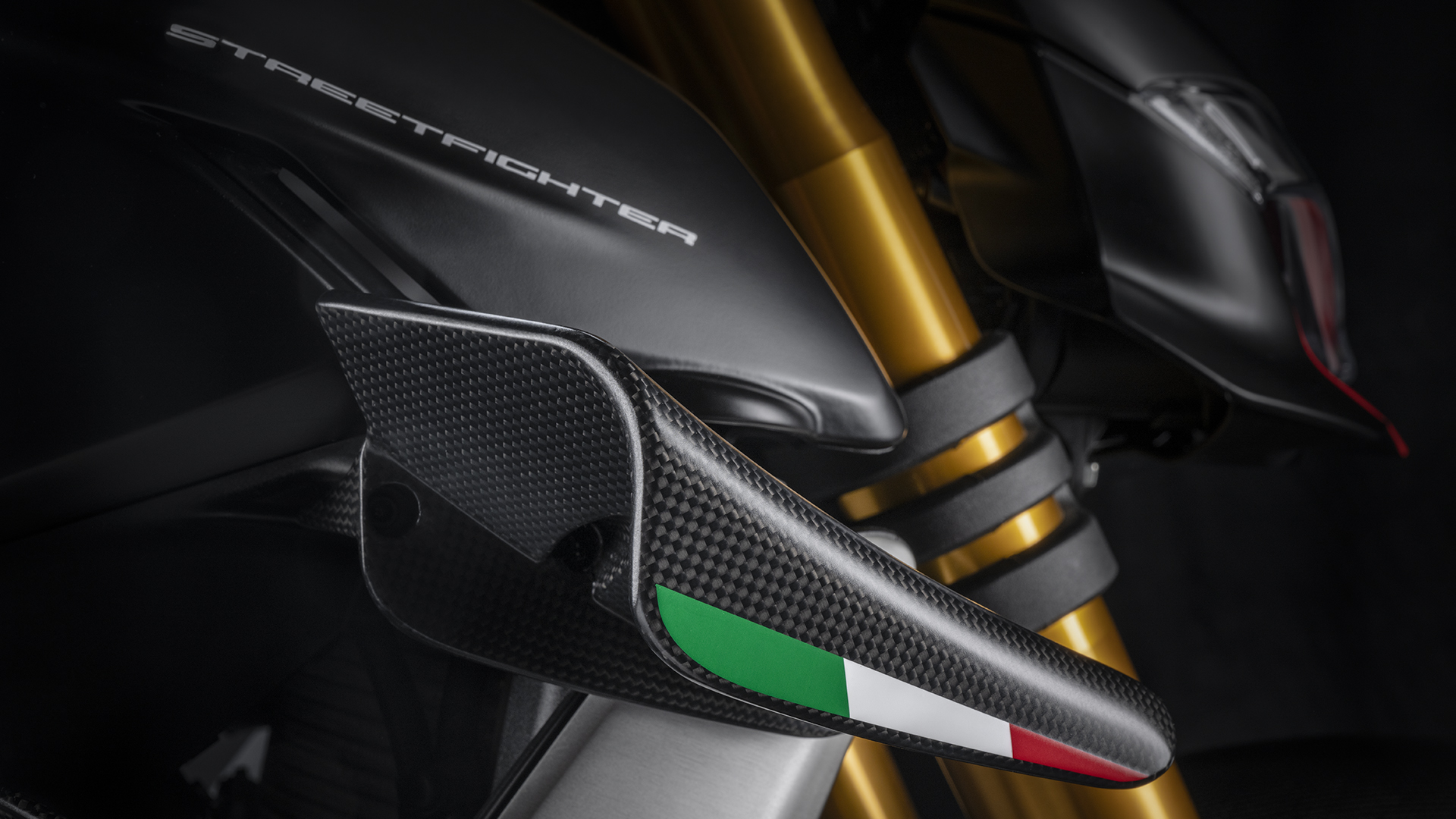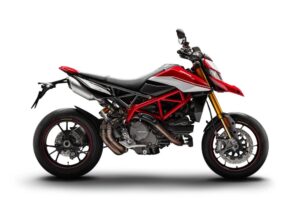Description
The top-of-the-range model in the Streetfighter family is the Streetfighter V4 SP2 in a numbered version. A bike ready to take to the track, thanks to exclusive technical equipment that combines the “Fight Formula” with “SP” specifications, making it even more effective in sporty riding and particularly on the circuit.
The exclusive technical equipment that combines the “Fight Formula” with the “SP” specifications, makes Streetfighter V4 SP2 even more effective in sports riding and in particular on the track.
The Brembo Stylema R® front brake calipers guarantee high braking power, as well as exceptionally consistent performance even in the case of prolonged use on the track*.

- DISPLACEMENT
- 1,103 cc
- POWER
- 153 kW (208 hp) @ 13,000 rpm
- TORQUE
- 123 Nm (90.4 lb-ft) @ 9,500 rpm
- SEAT HEIGHT
- 845 mm (33.3 in)
- WET WEIGHT NO FUEL
- 190 kg (419 lb)
- MAINTENANCE SERVICE INTERVALS
- 12,000 km (7,500 mi) / 12 months
The brake department consists of two 330 mm diameter Brembo discs at the front combined with the new Brembo Stylema R® monobloc calipers, with racing-derived pistons equipped with ventilation holes, which improve the stability of the lever travel after numerous laps of the track and reduce residual torque.*
The high-quality wheels of the Streetfighter V4 SP2, with 5 split spokes, are made of high-strength carbon fibre and have aluminium hubs screwed to the composite structure.*
The rider foot-pegs are made of high quality anodized aluminium alloy which maintains its original appearance over time. In addition to being a pleasure for the eye, these foot-pegs allow the rider to find the position that best suits his build and riding style.
Like the Streetfighter V4 S, the SP2 version is also equipped with an Öhlins NIX-30 fork, Öhlins TTX36 rear shock absorber and Öhlins steering damper controlled by the second generation Öhlins Smart EC 2.0 system with an event-based operating system.
The Streetfighter V4 is equipped with the 1,103 cc Desmosedici Stradale engine. In this configuration the 90° V4 delivers 208 hp (153 kW) at 13,000 rpm, a high level of power for a naked, unrivalled in the segment.
The 90° V4 of the Streetfighter V4 SP2 employs a 9-disc STM EVO-SBK dry clutch, made from billet aluminium. Compared to the oil bath clutch of the Streetfighter V4 S, in extreme use of the bike on the track, the dry clutch guarantees a more effective slipper function, even in the most aggressive downshifts.
The decision to adopt a dry clutch allows the use of the new special engine oil on the Streetfighter V4 SP2, developed by Shell in collaboration with Ducati Corse.
Electronic riding aid systems
Many of the electronic systems that are now standard on motorbikes were pioneered by Ducati, which has earned a place among the most advanced companies in the sector. Safety, comfort and performance improved thanks to the continuous improvement.
The Streetfighter V4 SP2 implements the Power Modes logic already developed in the Ducati Panigale V4 and V4 S, obiously with calibrations dedicated to the Desmosedici Stradale engine in the Streetfighter configuration.
For the High and Medium Power Modes, a new Ride by Wire map management system has been developed with dedicated calibration for each of the six gears, which ensures the rider always obtains the optimum thrust every time the throttle is opened.
The Wet Riding Mode is designed for riding on low-grip surfaces, or precisely on wet roads. The RM limits maximum power to 160 hp with a particularly gentle throttle response (power mode Low) and, in the V4 S version, a softened suspension set-up to favour grip and safety. The default level of the electronic controls is set to offer maximum stability ensuring better grip and stability.
The graphics are revised in all views, to make the information simpler and more descriptive and help the enthusiast in the calibration of the various parameters.
The dashboard offers the “Track Evo” display mode, which replicates the layout used on the MotoGP Desmosedici and guarantees an immediate view of the most important information and the intervention of the electronic controls.





